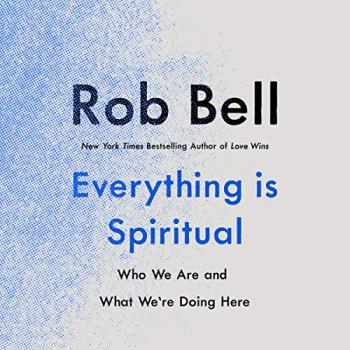 [This post by Dr. Rita Sherma is part of a roundtable discussion on the new book Being Different: An Indian Challenge to Western Universalism by Rajiv Malhotra, now featured at the Patheos Book Club.]
[This post by Dr. Rita Sherma is part of a roundtable discussion on the new book Being Different: An Indian Challenge to Western Universalism by Rajiv Malhotra, now featured at the Patheos Book Club.]
There is difference that matters and difference that really does not. In Being Different: An Indian Challenge to Western Universalism, the author makes a case for the importance of not falling prey to the belief that the obliteration of all difference will lead to greater harmony for humanity. Being Different uses Indian civilization and its interaction with the West as a case study for the problem of the erasure of differences that matter.
In a recent interview in Tricycle, the Brazilian-born founder of the reformist Juniper school of the Gelug denomination of Tibetan Buddhism, Segyu Rinpoche explained why he had created a reformist school in the lineage into which he was inducted, which attempts to do away with differences arising from the Tibetan culture but not Buddhist insights:
“I am within the tradition….But I did not blindly follow it. I was able to distinguish between the Tibetan culture and the essence of the teachings….Eventually, I had a fair number of exceptional students, but many felt there were barriers to comprehending the Tibetan tradition….they [asked me] questions like ”Why do we have to follow forms that are foreign to us? Is this a condition for inner growth, or would it be better to find ways more culturally appropriate?”….So we began a process of challenging assumptions, discussing the teachings, their relevance to Westerners, and the cultural barriers….Our main task was to make sure we did not throw out the baby with the bathwater—to keep the essence and potency intact.”
At first glance, the thoughts of this teacher, who views himself as a Westerner, seem innocuous, even laudatory. If Buddhism is to become at home in the West, should it not become “Westernized”? The answer is that it definitely should and, indeed, would over time in any case, as it has in every new culture it has entered. Buddhism, a Dharma Tradition (a termed I coined to describe those spiritual traditions that originally emerged in ancient India), was the first “world religion” meaning that it had spread widely from it source of origin to distant corners at a time when Christianity had not been broadly disseminated, and Islam was yet unborn. Buddhism spread, as Rajiv Malhotra notes in Being Different, without bloodshed or conquest; without clergy following their soldiers to convert vanquished peoples to a better way. This is difference that matters.
Returning now to the application of the premise of Being Different, in terms of difference that matters, to the reform efforts of Western Buddhists such as Segyu Rinpoche, quoted above, the question one must ask is: Who decides how to distinguish between the baby and the bathwater and how do we know whether they will always be right in discerning the distinction between the essential and the cultural? Is culture simply “baggage” that can be dispensed with, difference that does not matter? As David R. Loy has written recently: “Good critical studies undermine the assumption that culture is merely a kind of baggage that can be discarded at will. The problem for [Western] Buddhist modernists…is that we tend to view our own beliefs as culture-free….those of us who try [to the extract essential from cultural] are embedded in culture too.” Segyu Rinpoche, for example, has done away with prostrations as a sign of respect to tradition and teacher. But what is rather remarkable for someone who cares very much about not “throwing the baby out with the bathwater” is that he views the doctrine of rebirth as a cultural vestige as well. This however, not part of Tibetan culture; it has been intrinsic to the integrity of the Dharma Traditions for millennia. In other words it is a difference that matters. The principle of rebirth is not an arbitrary doctrine formulated by monastics huddling in a conclave, but by yogis and sages who experienced these insights through an empirical methodology. Malhotra emphasizes this point, that the focus on “embodied knowing” (for Dharma Traditions) on one hand, and what he calls “history-centrism” in general (on the part of the West), on the other, are key factors in creating the differences in approaches to the self, world, and reality. This is not a matter of making judgments of the validity of either position, but on noting that they cannot be confused with each other.
In Being Different, Malhotra offers a view on differences that matter, through the prism of what he refers to as “four areas of difference between dharmic and Judeo-Christian traditions” which are “embodied knowing versus history-centrism; integral unity versus synthetic unity; anxiety over chaos versus comfort with complexity; and cultural digestion versus non-translatable elements in Sanskrit.” Within these categories, he offers a plethora of elements that, when torn from their rootedness in a certain culture, lose the fullness of meaning and effectiveness in terms of being able to initiate positive change. And change is something we are in dire need of, not only as a global society but as a species facing an existential threat due to the spread of a consumer monoculture which seeks to erase—difference.
Rita Sherma holds an M.A. in Women’s Studies in Religion, and Ph.D. in Religious Studies (2002). Since 2007, Dr. Sherma has served as Executive Director of the School of Philosophy and Religious Studies at Taksha University, and is the President of the Confluence Institute initiative which partners with US and Indian institutions of higher learning to preserve and apply indigenous knowledge systems for contemporary needs. She is the Co-founder and Vice-President of DANAM (Dharma Academy of North America), the first scholarly association in North America to offer a dedicated forum for the interdisciplinary academic study of the Dharma Traditions (Hindu, Jain, Buddhist, and Sikh Dharma). She is the Co-founder and former President of Foundation for Indic Philosophy and Culture (FIPC) at the School of Religion at Claremont Graduate University, and is a Chief Co-Editor of the Journal of Dharma Studies. Previous books include of five co-edited volumes, including Dying, Death, and Afterlife in Dharma Traditions and Western Religions (2007); Hermeneutics and Hindu Thought (2008), and Woman and Goddess in Hinduism: Reinterpretations and Re-envisionings (2011); Prayer and Worship in Dharma Traditions (forthcoming).











